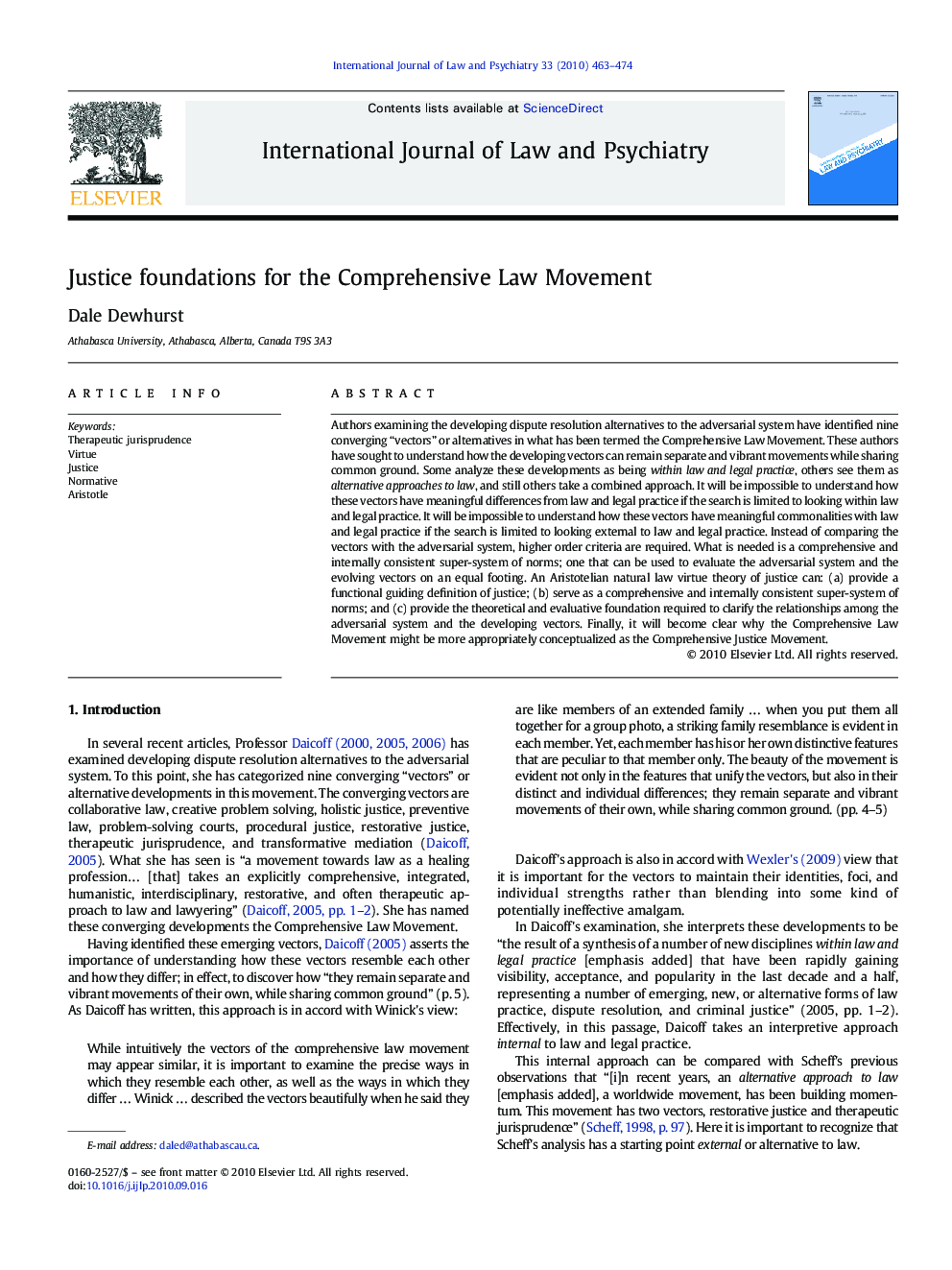| Article ID | Journal | Published Year | Pages | File Type |
|---|---|---|---|---|
| 101168 | International Journal of Law and Psychiatry | 2010 | 12 Pages |
Abstract
Authors examining the developing dispute resolution alternatives to the adversarial system have identified nine converging “vectors” or alternatives in what has been termed the Comprehensive Law Movement. These authors have sought to understand how the developing vectors can remain separate and vibrant movements while sharing common ground. Some analyze these developments as being within law and legal practice, others see them as alternative approaches to law, and still others take a combined approach. It will be impossible to understand how these vectors have meaningful differences from law and legal practice if the search is limited to looking within law and legal practice. It will be impossible to understand how these vectors have meaningful commonalities with law and legal practice if the search is limited to looking external to law and legal practice. Instead of comparing the vectors with the adversarial system, higher order criteria are required. What is needed is a comprehensive and internally consistent super-system of norms; one that can be used to evaluate the adversarial system and the evolving vectors on an equal footing. An Aristotelian natural law virtue theory of justice can: (a) provide a functional guiding definition of justice; (b) serve as a comprehensive and internally consistent super-system of norms; and (c) provide the theoretical and evaluative foundation required to clarify the relationships among the adversarial system and the developing vectors. Finally, it will become clear why the Comprehensive Law Movement might be more appropriately conceptualized as the Comprehensive Justice Movement.
Related Topics
Health Sciences
Medicine and Dentistry
Forensic Medicine
Authors
Dale Dewhurst,
